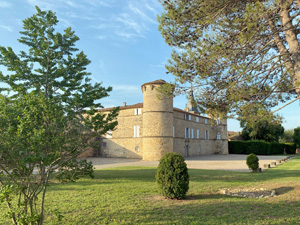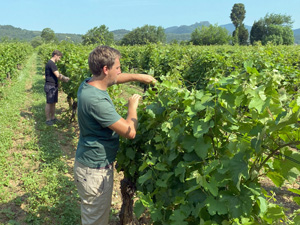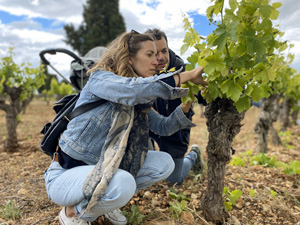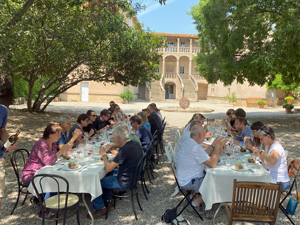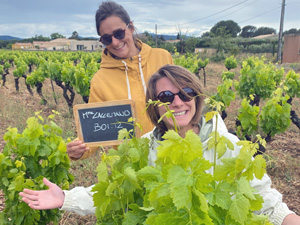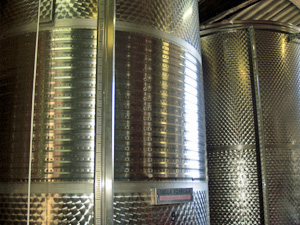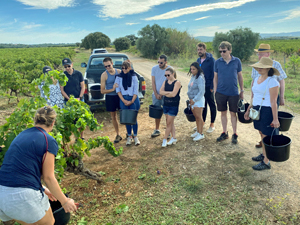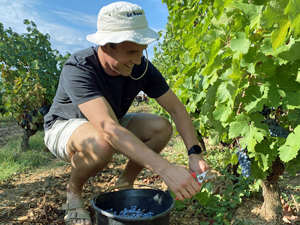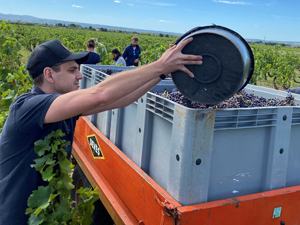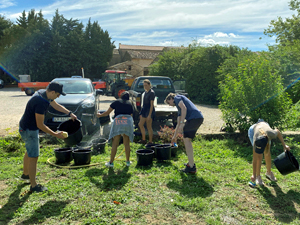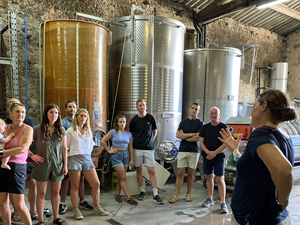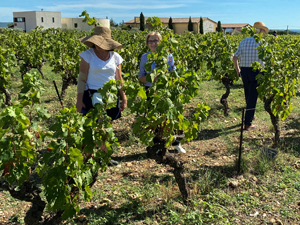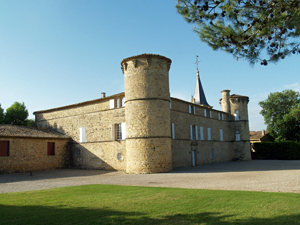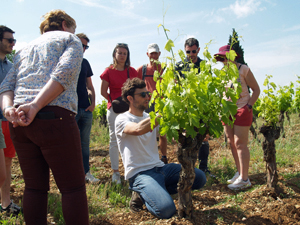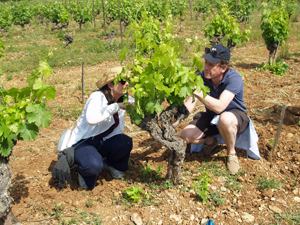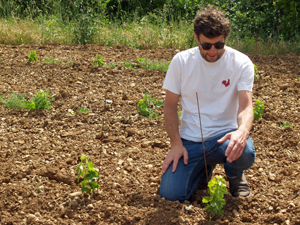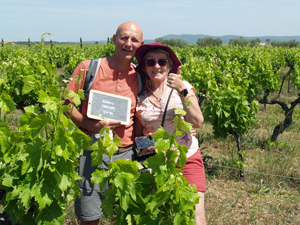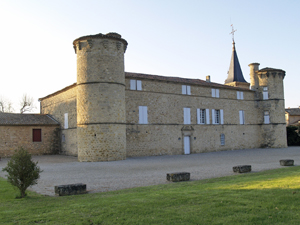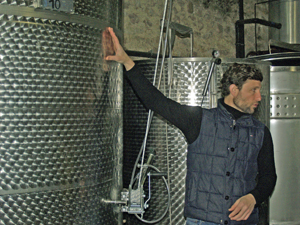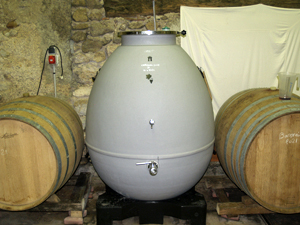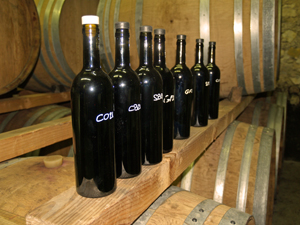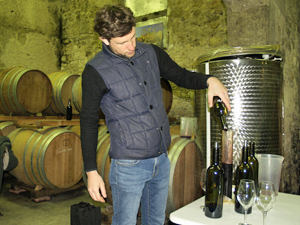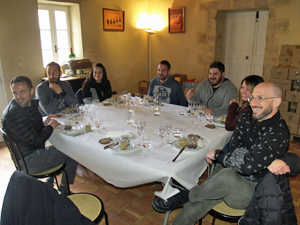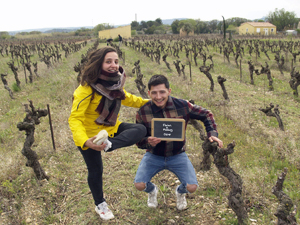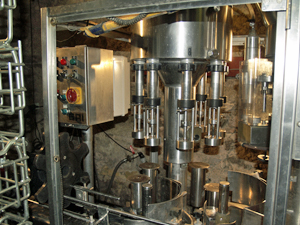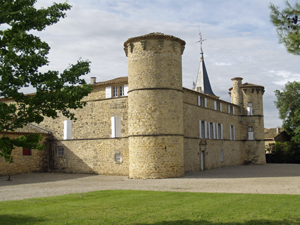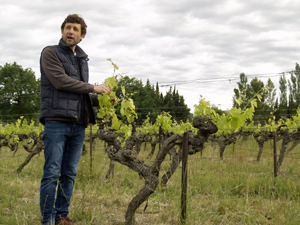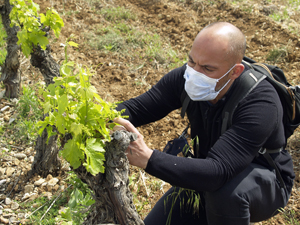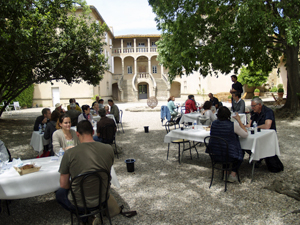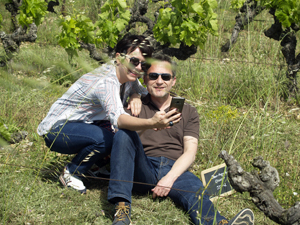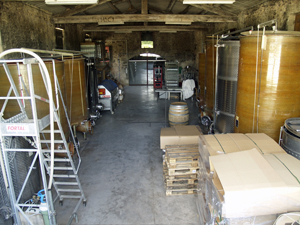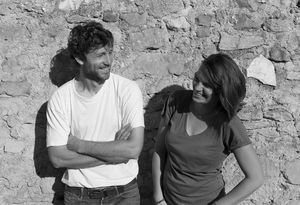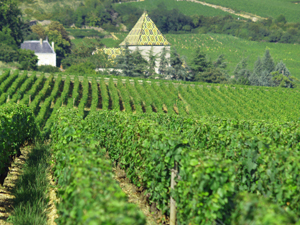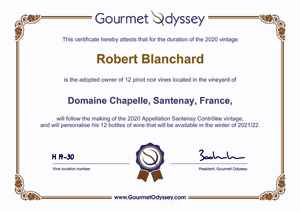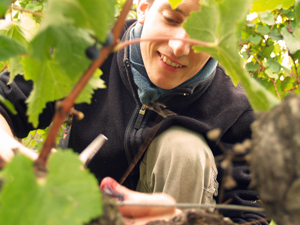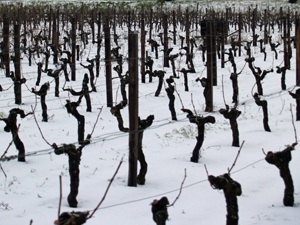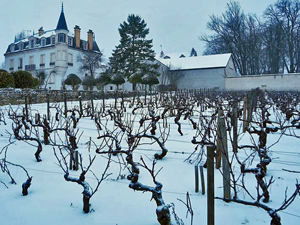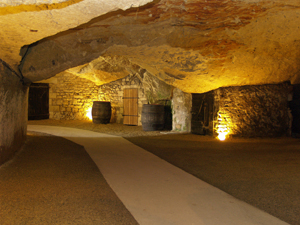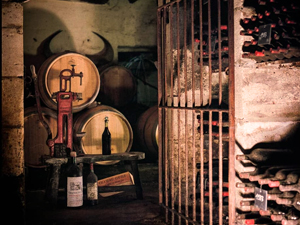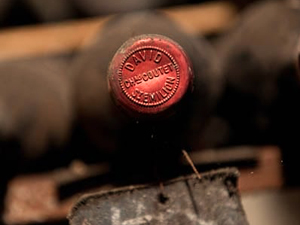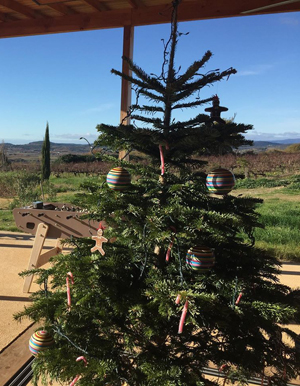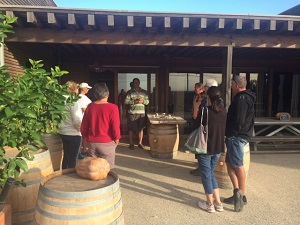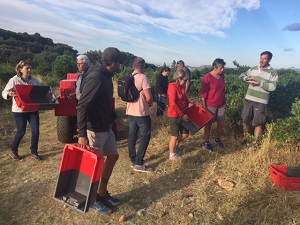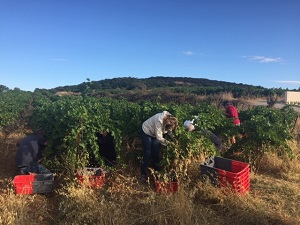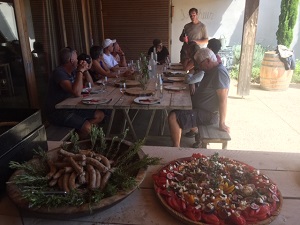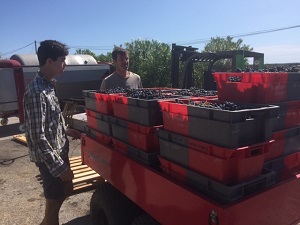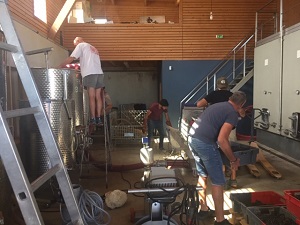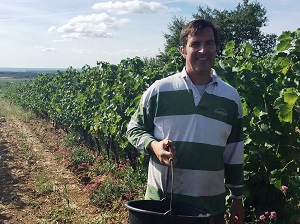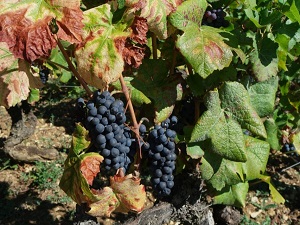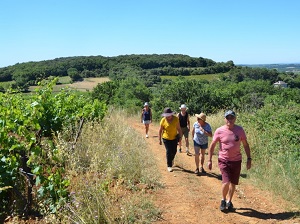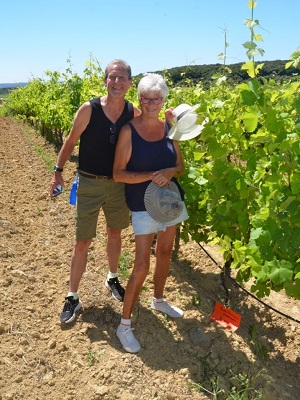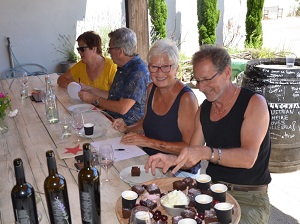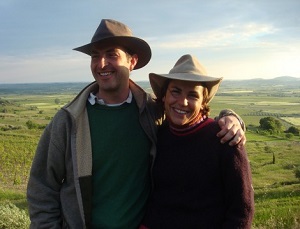A look back on the Harvest Experience Day on the 9th September at Château de Jonquières in the Terrasses du Larzac wine-growing region, one of the Languedoc’s oldest family run wineries.
Charlotte and Clément, the young wine-making couple are now in charge at the winery, and represent the 32nd generation.
We were welcomed in the courtyard with a coffee and some delicious brioche from a local baker. Once everyone had arrived, Gaël, the Gourmet Odyssey wine expert, presented the programme for the day, before Charlotte introduced us to the history of the winery, the characteristics of the different terroirs, and the latest news of this vintage.
We then walked out into the vineyard until we got to a plot of Grenache where we admired the surrounding view.
Charlotte has been harvesting the grapes since she was a little girl and knows that time is precious, particularly with the hot weather we’ve been having this September, so we needed to make the most of the relatively cooler morning.
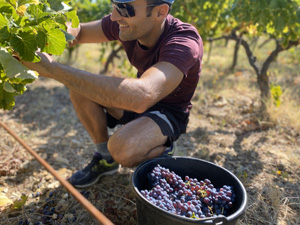
We spread out in pairs throughout the rows having listened intently to our instructions of how to harvest. We had a little sorting to do, ensuring that we only collected grapes that were in the best condition. We quickly got the hang of harvesting, and learnt out to handle the precious fruit without damaging it.
Clément stayed nearby with his tractor, where we stocked the fruit of our labour. The buckets filled quickly, and a couple of brave volunteers circulated among us to empty the Grenache grapes into one of the crates on the trailer behind the tractor, and give us an empty bucket as our reward!
The quality was very good in this plot of Grenache. Despite the hot year, the vines had been able to adapt and remained receptive to the care that had been given to them over the preceding months.
As we finished our rows, we felt justly proud of our work. It had been a great opportunity to see at firsthand what it’s like to be a harvester.
We made the most of a refreshment break to visit a plot of your Cinsault vines, and the winemakers explained how they had replanted the vineyard.
Back at the winery, we cleaned the material, as the buckets and secateurs needed to be rinsed for the next day. Once again, we showed great teamwork.
During this time, Clément brought the grapes we had picked back and left them in front of the de-stemming machine.
This next stage is the first in the transformation of grapes to wine, and consists of separating the grapes from the stems to avoid any unwanted bitter taste in the wine. Some of us helped Clément empty the crates into the de-stemming machine.
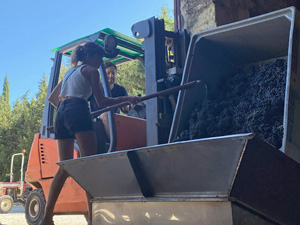
The grapes were then put into a stainless steel vat, ready to begin the fermentation process, and we listened attentively as Clément described how.
Charlotte also explained to us the different techniques used depending on the grape varietals and for making red, white and rosé wines. The process is very different for the red wines which ferment in contact with their skin during 20 or so days, and the whites which are pressed straight away before the fermentation starts. We also learnt about how controlling the temperature is crucial, something we’ll talk more about during the Vinification Experience Days.
We sat down to lunch in the shady courtyard behind the château, and enjoyed the paring of the organic wines with the meal prepared by a local chef. It was a great opportunity to ask lots of questions to Charlotte and Clément.
After lunch, we walked through the small village of Jonquières to visit our adopted vines, an old plot of Carignan that had been planted by Charlotte’s grandmother some 80 years ago.
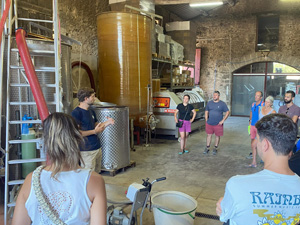
The day finished back in the chai, where Clément introduced us to the work that happens next to manage the wines through the fermentation and ageing processes. We’ll learn more about this during the Vinification Experience Days.



